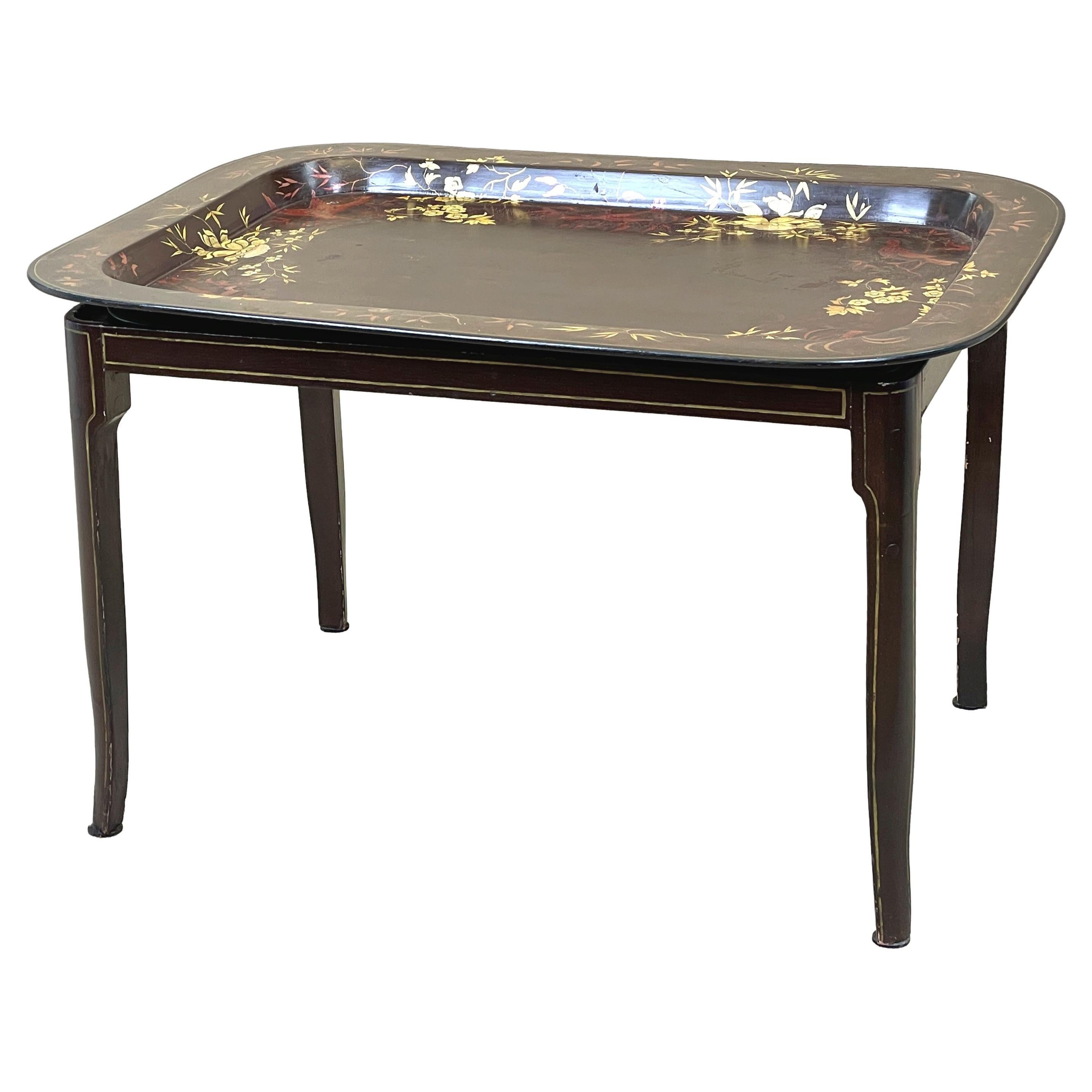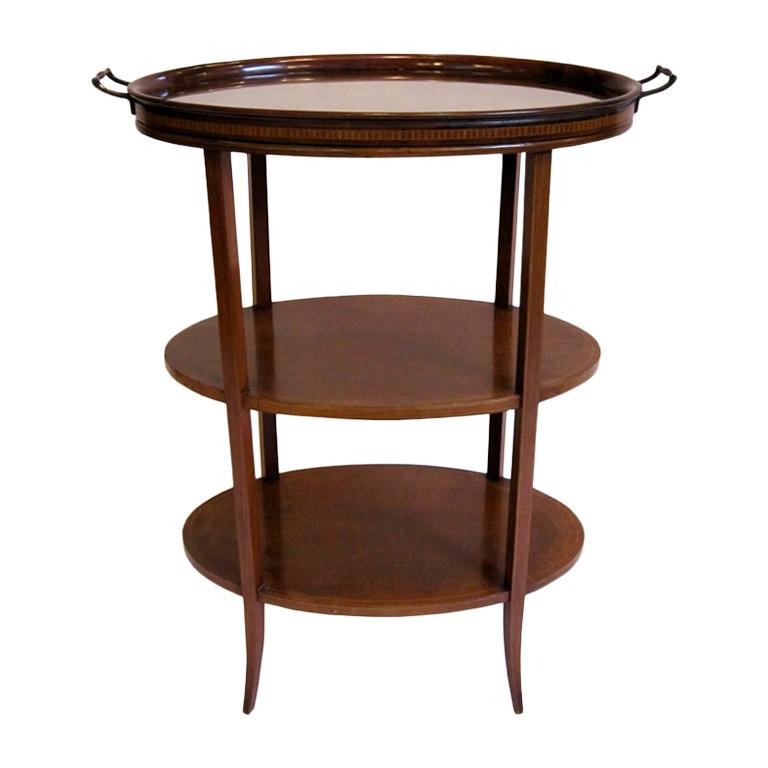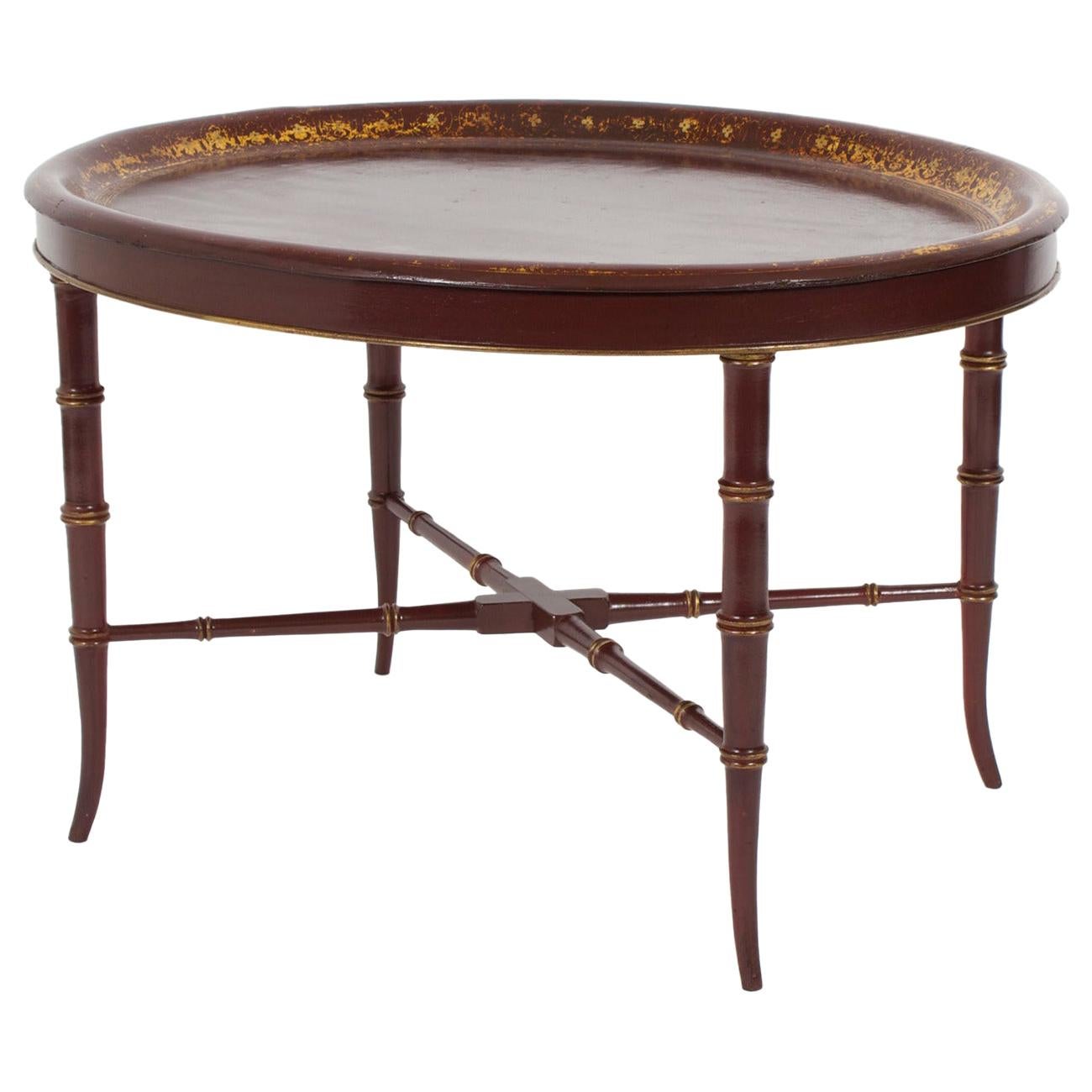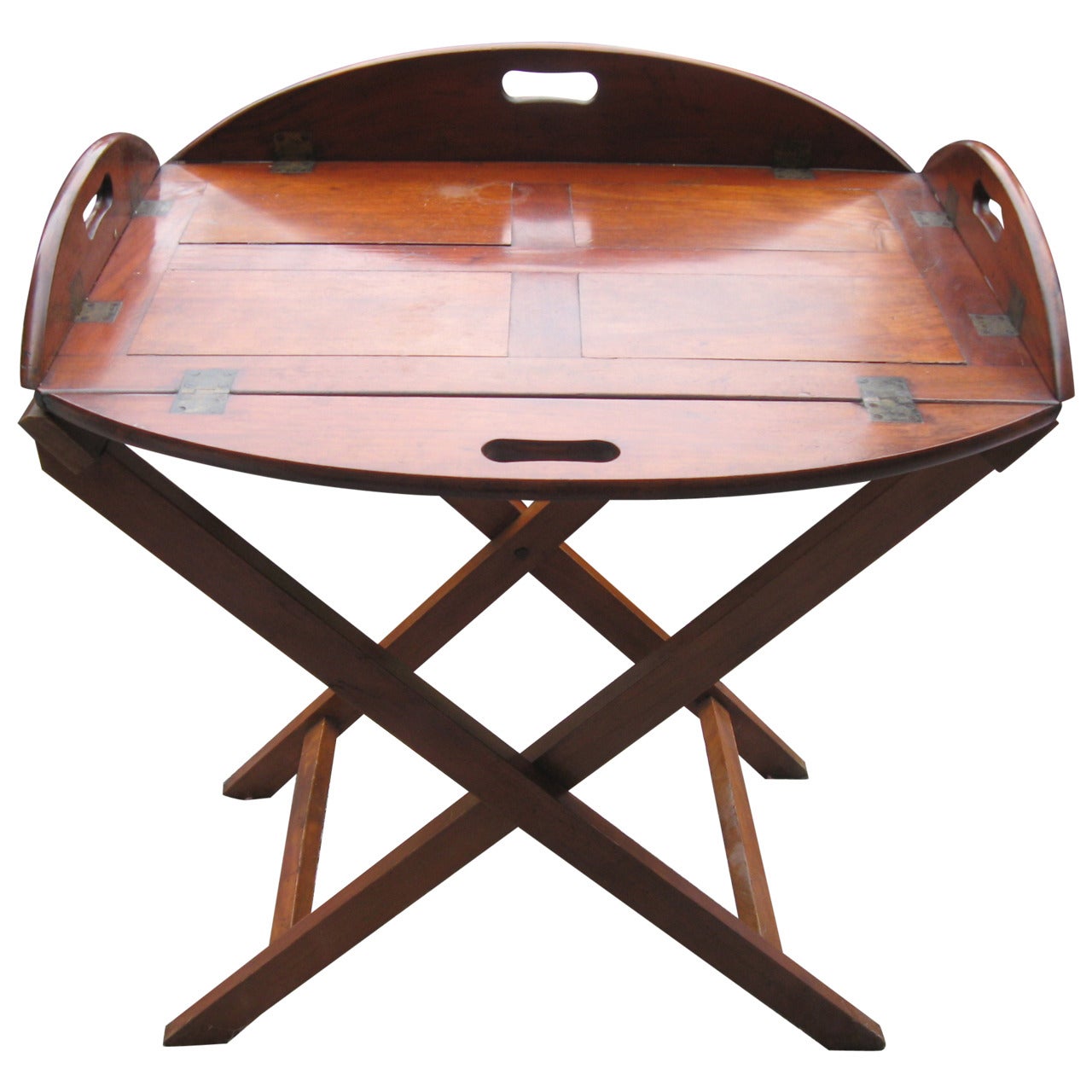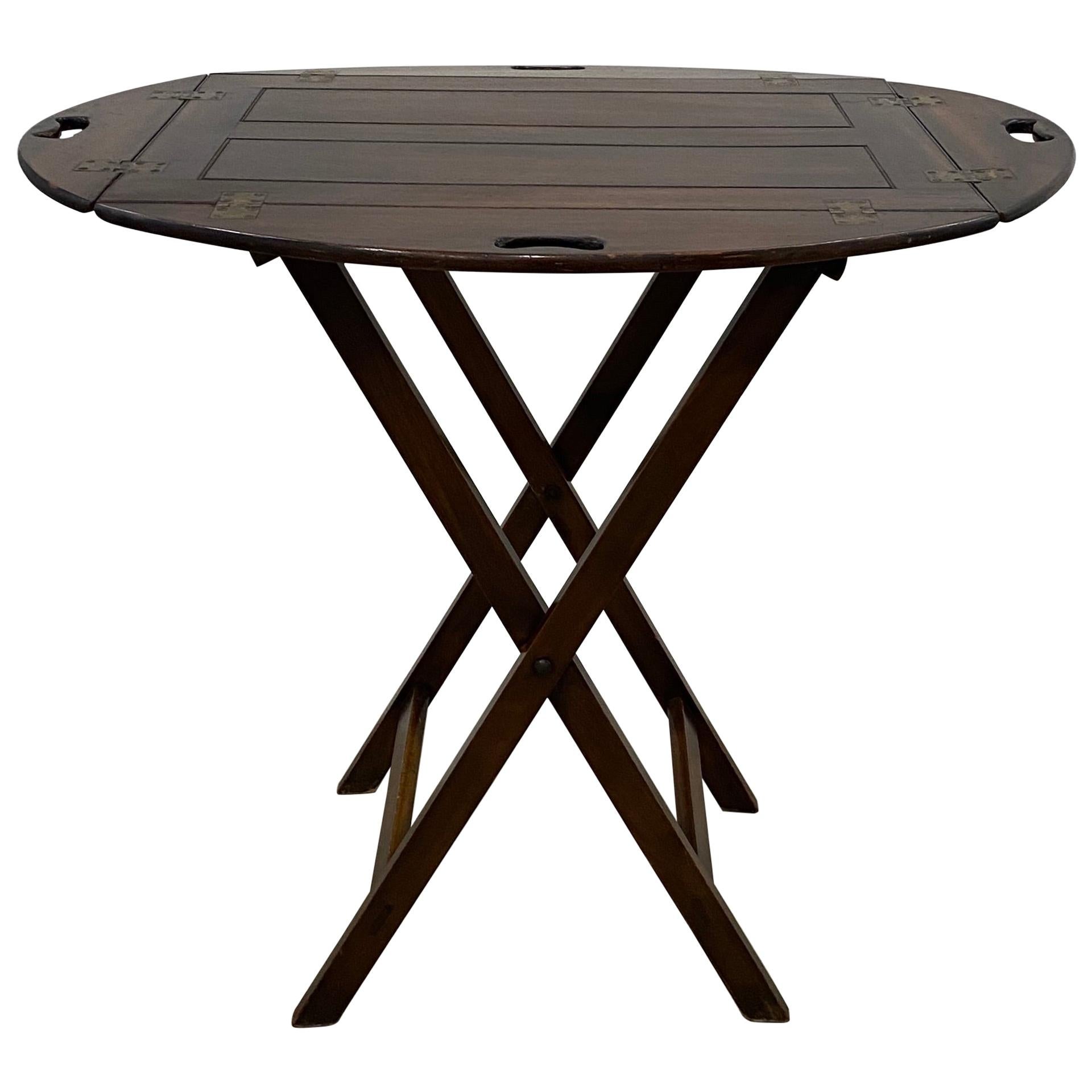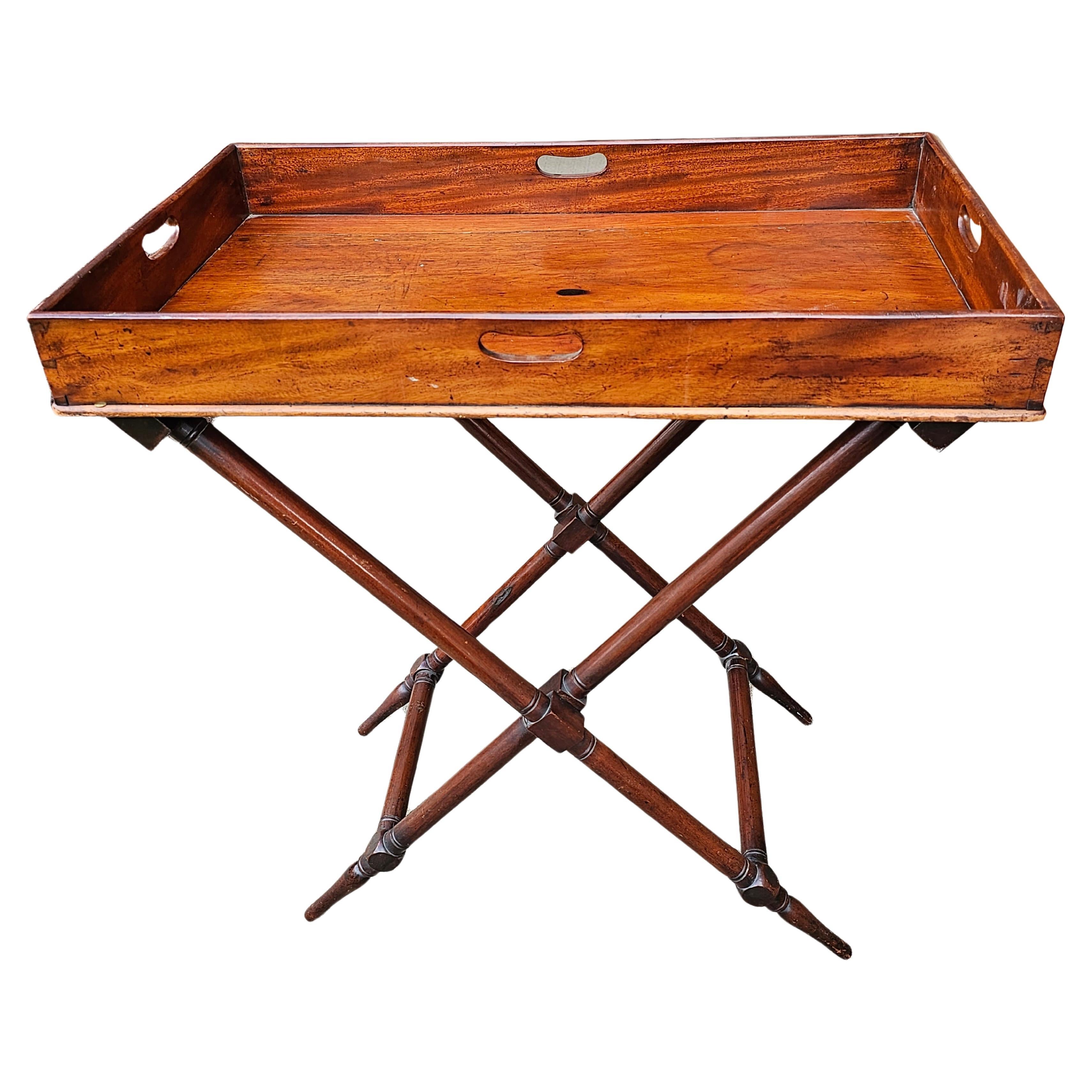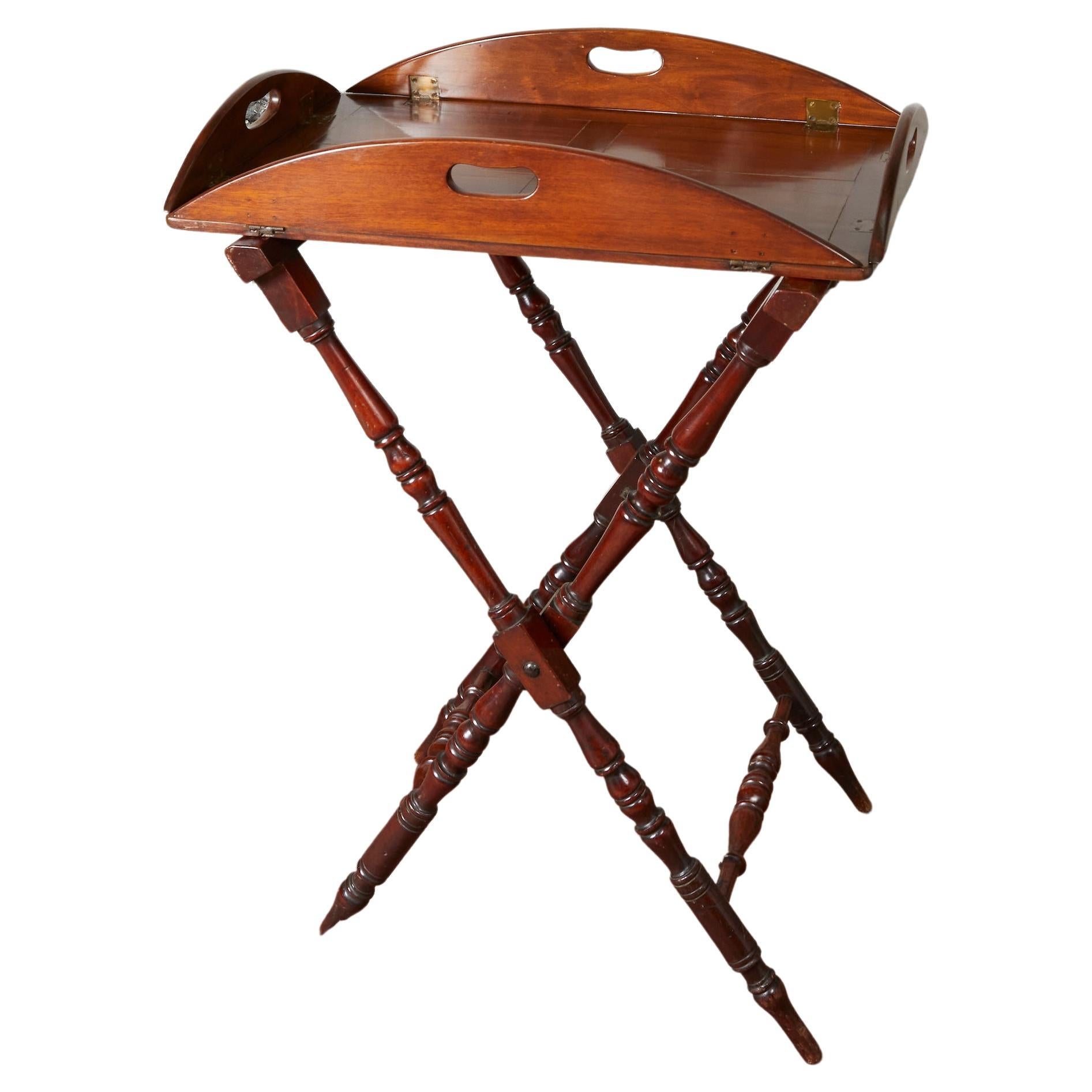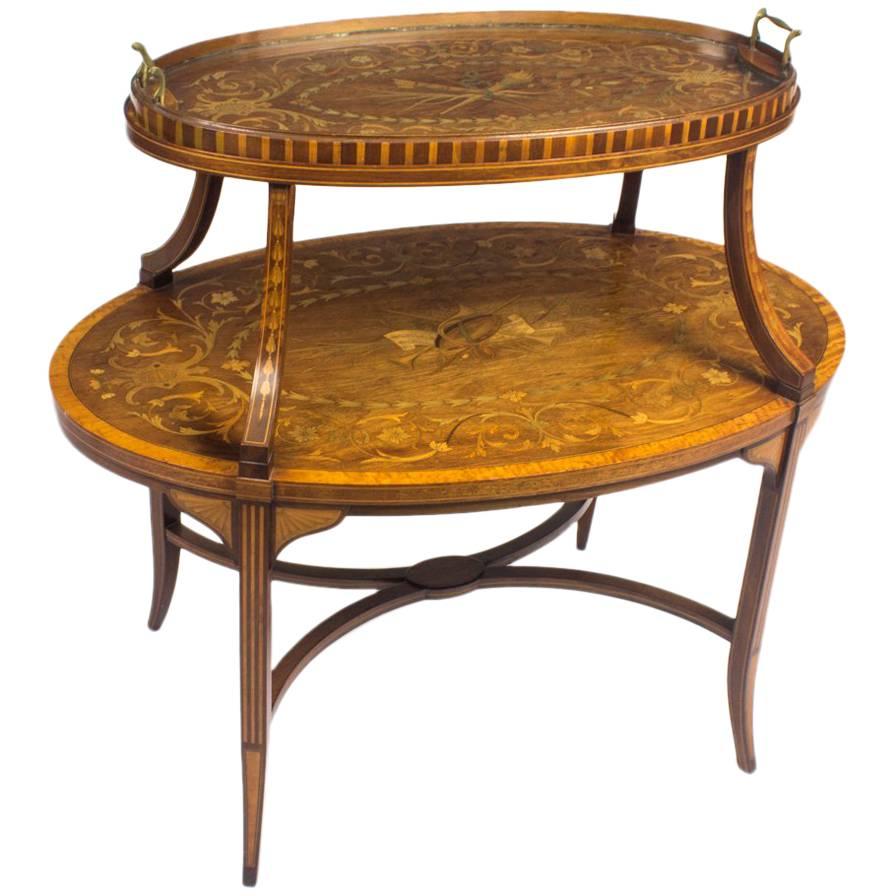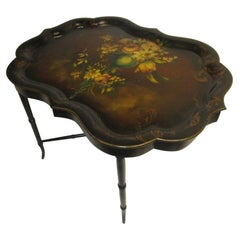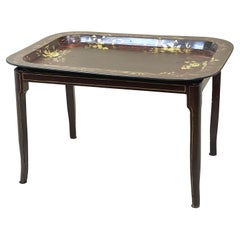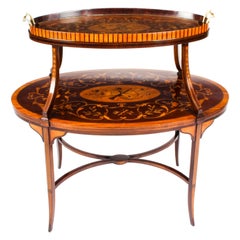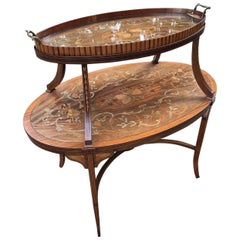
19th Century Mahogany Marquetry Tier Tray Table by S & H Jewell, London
View Similar Items
1 of 9
19th Century Mahogany Marquetry Tier Tray Table by S & H Jewell, London
About the Item
- Dimensions:Height: 32.5 in (82.55 cm)Width: 35.5 in (90.17 cm)Depth: 21.5 in (54.61 cm)
- Style:Early Victorian (Of the Period)
- Materials and Techniques:
- Place of Origin:
- Period:
- Date of Manufacture:1840
- Condition:Wear consistent with age and use.
- Seller Location:Richmond, London, GB
- Reference Number:Seller: TRAY18011stDibs: LU4267113380321
You May Also Like
- 19th Century Papier Mâché Scalloped Tray Table on Faux Bamboo BaseBy Jennens and BettridgeLocated in Savannah, GAScalloped shape black papier mâché tray table with very vibrant and detailed floral design. The stunning tray was mounted later on a faux bamboo custom wooden base.Category
Antique 1840s English Early Victorian Tray Tables
MaterialsPaper, Faux Bamboo
$1,436 Sale Price20% Off - 19th Century Papier Mache Tray on StandLocated in Bedfordshire, GBA very attractive mid 19th century oblong papier maché tray having elegant hand painted and gilded floral decoration housed on later square tapered leg stand (What better way t...Category
Antique Mid-19th Century English Victorian Coffee and Cocktail Tables
MaterialsPaper
- Antique English Marquetry Etagere Tray Table, 19th CenturyLocated in London, GBThis is a truly exceptional antique English Edwardian mahogany and satinwood banded marquetry oval two tier 'etagere', in the manner of Edwards & Roberts, circa 1890 in date. Crafted from the best flame mahogany, note the wonderful grain to the wood and the beautifully inlaid decoration with musical trophies within scrolling foliage and kingwood crossbanding. Masterfully inlaid with Sheraton influences, this etagere has an elegant refined look. The removable glass bottomed tray can be used to serve drinks, etc. It is raised on elegant square section tapering outswept legs with a shaped cross stretcher. The craftsmanship and finish are second to none. THE BOTANICAL NAME FOR THE MAHOGANY THIS ITEM IS MADE OF IS SWIETENIA MACROPHYLLA AND THIS TYPE OF MAHOGANY IS NOT SUBJECT TO CITES REGULATION. Condition: In excellent condition having been beautifully cleaned and waxed in our workshops, please see photos for confirmation. Dimensions in cm: Height 86 x Width 90 x Depth 55 Dimensions in inches: Height 2 foot, 10 inches x Width 2 foot, 11 inches x Depth 1 foot, 10 inches Edwards & Roberts was founded in 1845, and had premises at 21 Wardour Street London. By the 1892 they occupied more than a dozen buildings in Wardour Street, where they continued to trade until the end of the century. They became one of the leading London cabinet makers and retailers working in a variety of styles, both modern and revivalist. Their business also involved retailing, adapting and restoring the finest antique furniture and there are many examples of their earlier furniture with later embellishments bearing their stamp. Edwards & Roberts specialised in marquetry, inlay and ormolu. Marquetry is decorative artistry where pieces of material (such as wood, pewter or brass silver) of different colours are inserted into surface wood veneer to form intricate patterns such as scrolls or flowers. The technique of veneered marquetry had its inspiration in 16th century Florence. Marquetry elaborated upon Florentine techniques of inlaying solid marble slabs with designs formed of fitted marbles, jaspers and semi-precious stones. This work, called opere di commessi, has medieval parallels in Central Italian "Cosmati"-work of inlaid marble floors, altars and columns. The technique is known in English as pietra dura, for the "hardstones" used: onyx, jasper, cornelian, lapis lazuli and colored marbles. In Florence, the Chapel of the Medici at San Lorenzo is completely covered in a colored marble facing using this demanding jig-sawn technique. Techniques of wood marquetry were developed in Antwerp and other Flemish centers of luxury cabinet-making during the early 16th century. The craft was imported full-blown to France after the mid-seventeenth century, to create furniture of unprecedented luxury being made at the royal manufactory of the Gobelins, charged with providing furnishings to decorate Versailles and the other royal residences of Louis XIV. Early masters of French marquetry were the Fleming Pierre Golle and his son-in-law, André-Charles Boulle, who founded a dynasty of royal and Parisian cabinet-makers (ébénistes) and gave his name to a technique of marquetry employing brass with pewter in arabesque or intricately foliate designs. Etagère is a piece of light furniture which was extensively made in France during the latter part of the 18th century. It consists of a series of stages or shelves for the reception of ornaments or other small articles. Like the what-not it was very often cornerwise in shape, and the best Louis XVI examples in exotic woods are exceedingly graceful and elegant. In modern usage, an étagère is often used to refer specifically to a long-legged shelf unit that fits over a bathroom toilet...Category
Antique 1890s English Edwardian Tray Tables
MaterialsSatinwood, Mahogany
- Edwardian Tiered Table of Inlaid Mahogany with Removable Tray from EnglandLocated in Austin, TXA fine English three-tiered étagère or tray table (serving or drinks table) with a removable glass and wood serving tray on the top tier. Featuring a sophisticated design of three ov...Category
Early 20th Century English Edwardian Tray Tables
MaterialsBrass, Metal
- 19th Century Red Paper Mache Tray on Custom StandLocated in Palm Beach, FLEarly paper mâché tray with custom made wood stand all in a desirable deep red or ox blood color, having four faux bamboo legs and cross stretchers. Tray decorated in well worn gilt,...Category
Antique 19th Century English Tray Tables
MaterialsPaper
- 19th Century English Mahogany Butlers Tray TableLocated in Water Mill, NY19th century English mahogany butlers tray table on a bar height stand with brass hinges.Category
Antique 19th Century English Tray Tables
MaterialsBrass
$2,300 / set

